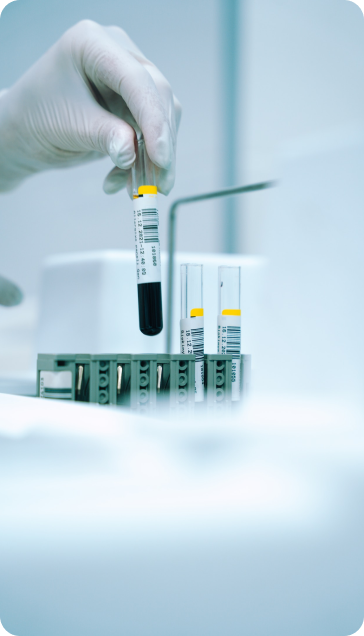List of Included Tests - 13 Tests
Glucose is a type of sugar. It is your body’s main source of energy. A blood glucose test measures glucose levels in your blood. A hormone called insulin helps move glucose from your blood into your cells.Too much or too little glucose in the blood can be a sign of a serious medical condition.
LDL cholesterol is considered the “bad” cholesterol, because it contributes to fatty buildups in arteries (atherosclerosis). This narrows the arteries and increases the risk for heart attack, stroke and peripheral artery disease (PAD).
Triglycerides are insoluble lipid in the blood ,present in dietary fat ,synthesised by the liver and stored in adipose tissue.Elevated levels of TG may be associated with risk of cronary artery disease and acute pancreatitis.
This test measures the amount of nitrogen in your blood that comes from the waste product urea. A small amount of urea nitrogen in your blood is normal. If you have too much urea nitrogen in your blood, your kidneys aren’t filtering it properly. You may have a condition that’s affecting your kidneys’ health. A BUN test is done to see how well your kidneys are working.
A urine microalbumin test is a test to detect very small levels of a blood protein (albumin) in your urine. A microalbumin test is used to detect early signs of kidney damage in people who are at risk of developing kidney disease.
Uric acid blood test, also known as a serum uric acid measurement, determines how much uric acid is present in your blood. The test can help determine how well your body produces and removes uric acid. Uric acid is produced when your body breaks down foods that contain organic compounds called purines.
Glycated Haemoglobin (HbA1c) is a blood test that is used to help diagnose and monitor people with diabetes. It measures the amount of blood sugar (glucose) attached to your hemoglobin. It shows your average blood sugar level over the past 2 or 3 months.The higher the hemoglobin A1c, the higher your risk of having complications related to diabetes.
This ratio compares your total-cholesterol-to-HDL ratio. It helps figure out your risk for coronary heart disease and stroke. The American Heart Association recommends that all adults older than 20 have a lipid profile once every 4 to 6 years as long as your risk for cardiovascular disease stays low.
Cholesterol is a waxy substance found in your blood. Your body needs cholesterol to build healthy cells, but high levels of cholesterol can increase your risk of heart disease.
This test measures how well your kidneys are performing their job of filtering waste from your blood. Creatinine is a chemical compound left over from energy-producing processes in your muscles. Healthy kidneys filter creatinine out of the blood. Creatinine exits your body as a waste product in urine
This test is done to measure the amount of Alanine Aminotransferase (ALT) in blood serum. ALT is an enzyme found mostly in the liver. This test is prefered to be done on a regular basis to assure liver is in a healthy state
Preparation
- Fasting from 10 to 12 hours is required




